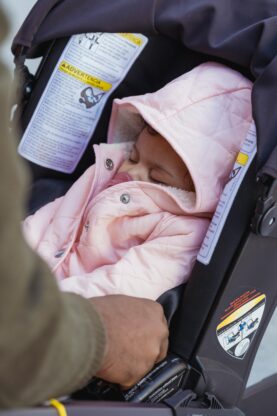A responsible babysitter goes beyond simply supervising children; they prioritize the safety and well-being of the children under their care. Safeguarding techniques and childproofing tips are essential knowledge for any individual looking to nurture a safe environment for children during babysitting sessions. This article aims to provide useful information and practical advice to help in safeguarding children effectively. From understanding potential hazards to implementing appropriate safety measures, these guidelines will equip babysitters with the necessary skills to ensure the welfare of the children entrusted to their care. Let’s dive into this important topic and explore key areas such as hazard identification, safety measures, emergency preparedness, communication with parents, and maintaining a safe environment.
Table of Contents
Hazard Identification
One of the first steps in creating a safe environment for children is identifying potential hazards. By recognizing and addressing these risks, babysitters can significantly reduce the likelihood of accidents or injuries.
The house where you are babysitting might be unfamiliar to you, so it’s important to be vigilant and conduct a thorough assessment of the surroundings. Pay attention to potential dangers such as unsecured furniture, sharp edges, accessible chemicals, and loose electrical outlets. Keep an eye out for small objects that could pose choking hazards, and ensure that all windows and doors are secure.
On-Demand Childcare in Your Neighborhood
Book a Sitter
Safety Measures
Once hazards have been identified, implementing safety measures becomes crucial to safeguarding the children. These measures involve adapting the environment to minimize potential risks and establishing safe practices.
One of the most effective ways to ensure child safety is by childproofing the house. Install safety gates at stairs and entrances to restrict access to hazardous areas. Secure cabinets and drawers containing cleaning products or sharp objects with childproof locks. Cover electrical outlets with safety plugs and use corner guards on tables or furniture with sharp edges. Additionally, keep poisonous substances out of children’s reach or locked away.
Besides childproofing, it’s important for babysitters to implement safety practices. This includes supervising the children at all times, especially when they are engaged in activities that could be potentially dangerous. Babysitters should enforce rules, such as no running indoors, no playing with or near the stove, and no climbing on furniture. By setting boundaries and explaining the consequences of unsafe behavior, babysitters can effectively maintain a safe environment while educating children about responsible behavior.
Emergency Preparedness
Even with precautionary measures in place, emergencies can still occur. It is essential for babysitters to be prepared for unexpected situations and respond promptly and effectively.
First and foremost, babysitters should acquaint themselves with emergency procedures and know how to contact emergency services, such as 911. This includes being aware of the address and any special instructions provided by the parents.

Furthermore, it is crucial to have a first aid kit on hand and be familiar with basic first aid practices. Babysitters should know how to handle common emergencies like burns, cuts, or choking. Being trained in CPR (cardiopulmonary resuscitation) is highly recommended, as it could potentially save a child’s life in a critical situation.
Communication with Parents
Maintaining open and effective communication with parents is vital for ensuring the safety of the children under a babysitter’s care. Babysitters should inquire about any specific instructions or rules regarding the children’s safety and well-being at the beginning of each babysitting session.
It is important to ask parents about any known allergies, medical conditions, or medications the children may have, as well as any dietary restrictions. Being aware of these factors will help the babysitter take appropriate precautions and respond appropriately in case of an emergency.
Regular updates to parents throughout the babysitting session can provide peace of mind and assure them that their children are safe and well-cared for.
It is essential to inform parents of any incidents or accidents, no matter how minor, as they may want to seek medical attention or be aware of any potential issues.
Maintaining a Safe Environment
Lastly, maintaining a safe environment is an ongoing task for babysitters. It is crucial to be alert and promptly address any new hazards that may arise during the babysitting session.
One aspect of maintaining a safe environment is ensuring proper supervision. Babysitters should remain attentive and actively engage with the children. Avoid being distracted by personal devices or any other distractions, as accidents can occur within seconds of not paying attention.
Tidiness is also important in maintaining a safe environment. Keeping the house clean and organized minimizes the risk of trips or falls. Encourage the children to clean up after themselves and put away toys, and ensure that walkways are clear and well-lit.
Ensuring the safety of children also involves creating a nurturing and respectful relationship between the babysitter and the children. This includes treating the children with kindness and responding to their needs promptly. By fostering trust and open communication, babysitters can create an environment where children feel comfortable and safe.
Conclusion
Safeguarding techniques and childproofing tips are essential for babysitters to provide a safe and secure environment for children. By identifying potential hazards, implementing safety measures, being prepared for emergencies, maintaining open communication with parents, and creating a safe environment, babysitters can ensure the well-being of the children under their care. Following these guidelines will not only enhance the safety of the children but also bring peace of mind to parents. Remember, every child’s safety is paramount, and by prioritizing their protection, babysitters can create a positive and secure babysitting experience.










